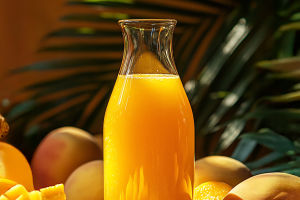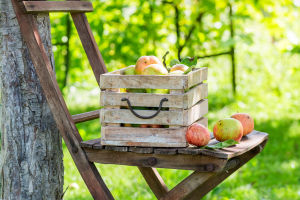Ever wonder why strawberries in June taste better than in December? Or why biting into a ripe peach in summer feels like a slice of heaven? That's the magic of seasonal fruits.
Not only are they more flavorful and vibrant, but they also reach their highest nutritional value during their natural harvest time.
In this article, we'll explore how eating with the seasons can supercharge your health, reduce your grocery bills, and bring joy back to your fruit bowl.
What Are Seasonal Fruits?
Seasonal fruits are those harvested during their natural growing period in a specific climate. For example, strawberries peak in late spring and early summer, while apples are freshest in fall. These fruits are allowed to ripen naturally in the sun, rather than being artificially ripened during shipping or storage.
Seasonal eating isn't just a food trend—it's a return to nature's rhythm. It's about enjoying fruits when they're supposed to be at their best, just as people did for generations before global supply chains made year-round access possible.
Why Season Matters: Flavor, Freshness, and Nutrients
When fruits are picked in season, they've had time to develop fully—both in flavor and nutrition. Out-of-season fruits, on the other hand, are often picked early and ripened artificially. This affects taste and reduces their nutrient density.
According to research published in the Journal of Agricultural and Food Chemistry, fruits grown and harvested in their natural seasons have higher levels of antioxidants and vitamins than those grown off-season or stored for long periods.
For example:
• Summer strawberries contain more vitamin C and anthocyanins compared to off-season imports.
• Winter citrus fruits like oranges and grapefruits deliver more natural juice and immune-boosting nutrients.
The Seasonal Fruit Calendar
Let's break it down by season so you can plan your shopping and eating habits to align with nature's schedule:
Spring:
• Strawberries
• Cherries
• Apricots
• Pineapple
• Rhubarb
Summer:
• Peaches
• Plums
• Berries (blueberries, raspberries, blackberries)
• Melons (watermelon, cantaloupe)
• Mangoes
Fall:
• Apples
• Pears
• Pomegranates
• Grapes
• Figs
Winter:
• Oranges
• Tangerines
• Grapefruit
• Kiwi
• Persimmons
Tip: Seasonal availability may vary depending on your region, so check local farmers' markets for the freshest options.
Nutritional Highlights of In-Season Fruits
Each season brings fruits rich in specific nutrients that naturally support our changing health needs.
• Spring fruits like strawberries and cherries are rich in vitamin C and antioxidants, helping to clear out winter sluggishness and support immune health.
• Summer fruits such as peaches and watermelon have high water content, keeping you hydrated and cool during hot months.
• Fall fruits like apples and pears contain pectin and fiber to support digestion and regulate blood sugar.
• Winter citrus fruits are loaded with vitamin C and bioflavonoids, which help fight seasonal illnesses.
A study in Nutrition Reviews found that consuming fruits at their peak ripeness also enhances the bioavailability of certain vitamins and antioxidants, making them easier for the body to absorb.
How Seasonal Eating Supports Your Health
Eating seasonally aligns with your body's nutritional needs across different times of the year. Here's how:
• Boosted immunity in winter from citrus fruits
• Improved hydration in summer from melons and berries
• Increased detox support in spring from fruits like pineapple and strawberries
• Enhanced gut health in fall from apples and grapes
This natural cycle of nutrients mirrors what your body often craves most at those times of year.
Better for Your Budget and the Planet
Buying in-season fruits also makes economic and environmental sense:
• Lower prices: In-season produce is abundant, reducing costs due to lower transportation and storage needs.
• Less spoilage: Fresher fruits mean fewer losses at home.
• Smaller carbon footprint: You're not eating mangoes flown halfway across the world in January.
The Environmental Working Group notes that seasonal and local produce often requires fewer preservatives and less packaging, helping to minimize environmental impact.
Tips to Identify Peak-Season Fruits
• Smell: Ripe seasonal fruits often smell more fragrant.
• Texture: They feel firm yet tender, not hard or rubbery.
• Color: Vibrant, natural colors indicate peak ripeness.
• Taste: Sweet and juicy, not bland or sour.
If you're not sure what's in season, ask at a local farmer's market or check a regional produce calendar online.
Preserving the Season: Freezing and Drying
Can't eat everything before it goes bad? Freeze your fruits! Cut, bag, and store them for up to 12 months for smoothies, baking, or sauces.
You can also dry fruits like figs, apples, and mangoes for long-term snacks without losing too many nutrients. Just make sure to store them properly in airtight containers.
Start Eating With the Seasons
Eating in-season fruits isn't just healthier—it's more satisfying. Nature gives us exactly what we need at the right time. You'll taste the difference, save money, and give your body a more balanced variety of nutrients throughout the year.
What's in Season Near You?
Now it's your turn! Head to a local market and see what fruits are ripe and ready near you. Which seasonal fruit do you look forward to the most each year? Leave a comment and share your favorite seasonal snack or dish—we'd love to hear what's fresh on your plate! 🍑🍒🍋


